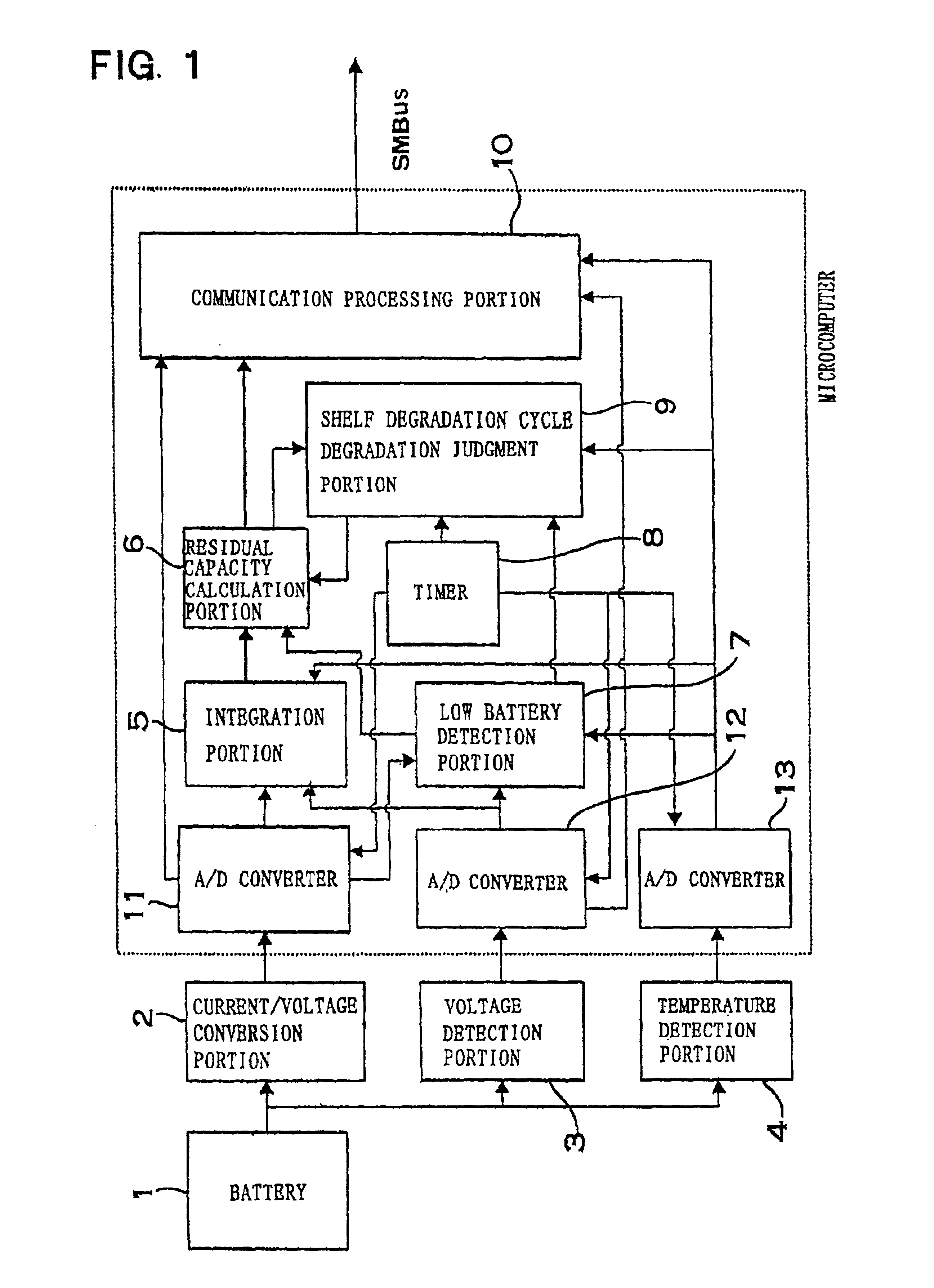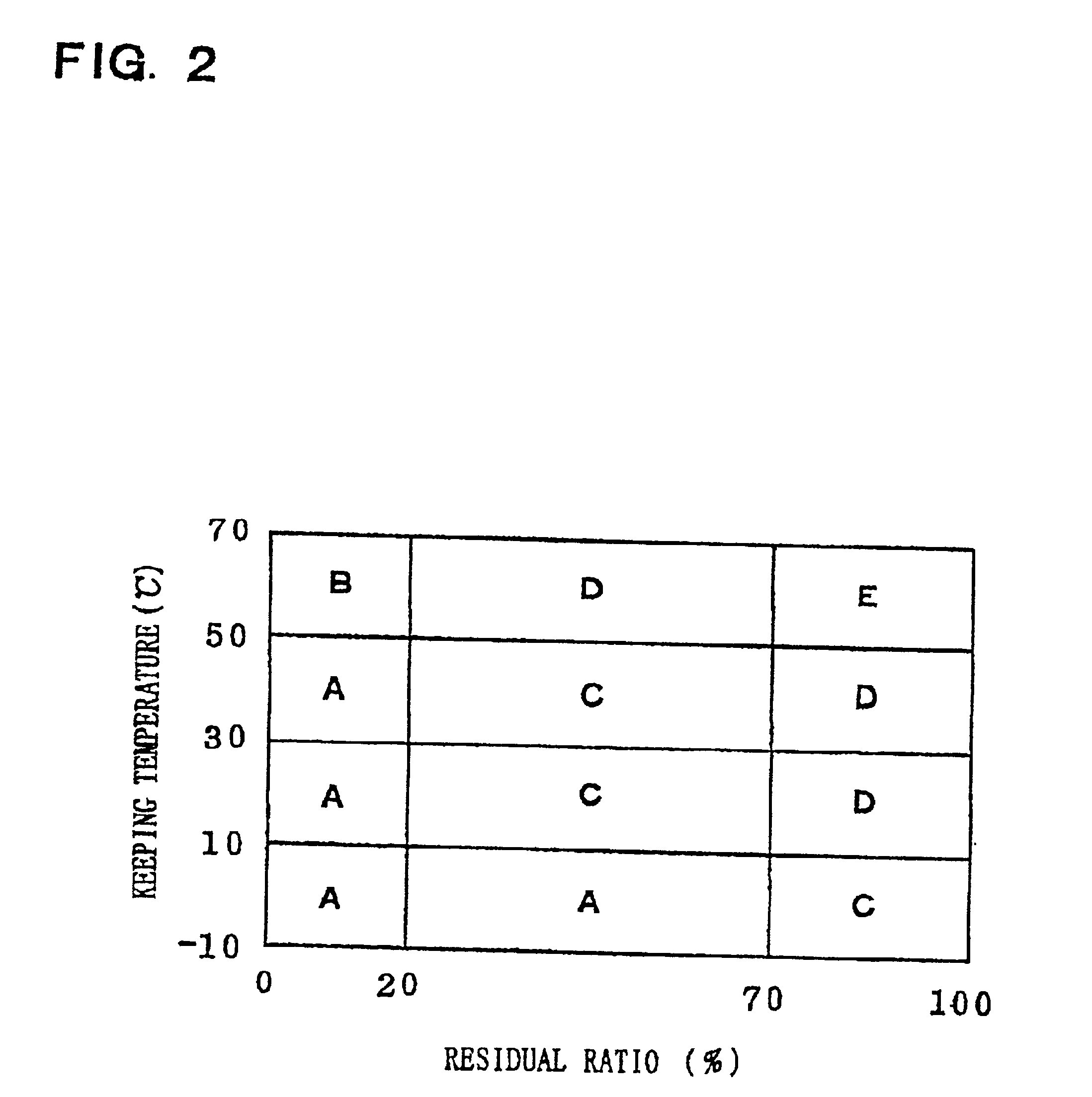Residual capacity correction method for battery
a battery and learning capacity technology, applied in the field of battery learning capacity correction method, can solve the problems of low frequency of full charge capacity correction, large error between corrections, and limited time between corrections, so as to reduce the learning capacity, simple, easily and more accurately, the learning capacity of the battery can be corrected. the effect of reducing the learning capacity
- Summary
- Abstract
- Description
- Claims
- Application Information
AI Technical Summary
Benefits of technology
Problems solved by technology
Method used
Image
Examples
Embodiment Construction
[0017]FIG. 1 is a circuit diagram of a combination battery used in a residual capacity correction method of the present invention. This combination battery includes a battery 1, a current / voltage conversion portion 2 for converting a current of charge and discharge into a voltage, a voltage detection portion 3 for detecting a voltage of the battery 1, a temperature detection portion 4 for detecting temperature of the battery 1, an A / D converter 11 for converting an analog signal of an output signal of the current / voltage conversion portion 2 into a digital signal, an A / D converter 12 for converting an analog signal outputted from the voltage detection portion 3 into a digital signal, an A / D converter 13 for converting an output signal of an analog signal of the temperature detection portion 4 into a digital signal, an integration portion 5 for integrating a charge and discharge current or electric power by calculating the output signal of the A / D converter 11, a residual capacity ca...
PUM
 Login to View More
Login to View More Abstract
Description
Claims
Application Information
 Login to View More
Login to View More - R&D
- Intellectual Property
- Life Sciences
- Materials
- Tech Scout
- Unparalleled Data Quality
- Higher Quality Content
- 60% Fewer Hallucinations
Browse by: Latest US Patents, China's latest patents, Technical Efficacy Thesaurus, Application Domain, Technology Topic, Popular Technical Reports.
© 2025 PatSnap. All rights reserved.Legal|Privacy policy|Modern Slavery Act Transparency Statement|Sitemap|About US| Contact US: help@patsnap.com



